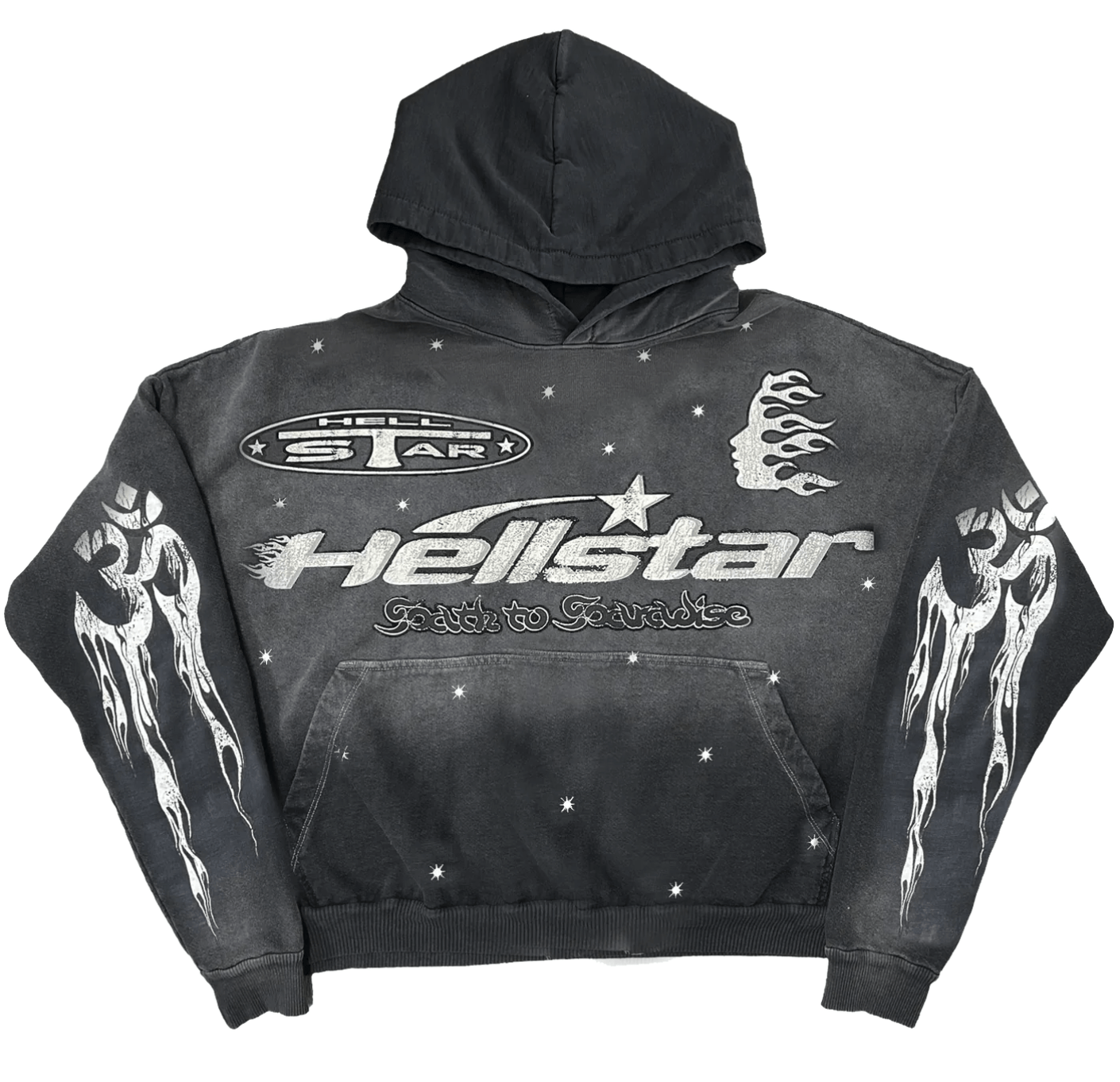Introduction
The hellstar long sleeve is a simple wardrobe piece with outsized styling potential when treated as the backbone of a minimalist fit. This article gives precise, hands-on instructions for turning one long sleeve into multiple refined, low-noise outfits that read modern and intentional.
You’re reading this because you want outfits that look considered without fuss: fewer garments, smarter combinations, and maximum impact. I’ll walk you through fit decisions, color logic, proportion rules, layering sequences, and concrete outfit pairings you can copy immediately.
Expect practical prescriptions — nothing abstract — so you can put together a complete look around your hellstar long sleeve and avoid common missteps. Each section starts with a short thesis you can steal for a featured snippet, followed by the detailed how and why.
This is written from a streetwear-meets-tailoring perspective: minimalism that respects proportion, texture, and urban function. No slogans, no loud logos — just outfits that work.
Keep in mind: these guidelines assume a typical long-sleeve shirt silhouette (crew or mock-neck) that reads clean and unbranded; adjust the finer points if your hellstar piece is distinctly oversized or heavily detailed.
What makes the hellstar long sleeve ideal for minimalist fits?
The hellstar long sleeve works because it is a neutral, repeatable layer that solves silhouette and sleeve-function problems without demanding attention. Minimalism needs reliable building blocks; a single, well-designed long sleeve is one of the best.
Minimal outfits succeed when each piece does one job exceptionally: the long sleeve anchors the torso layer, defines sleeve length, and sets the neckline and texture for everything stacked on top. It should sit neatly under jackets, sit well with tapered trousers, and pair cleanly with sneakers or boots.
Neutral color, unobtrusive seams, and a measured shoulder-line let the long sleeve harmonize across styles. When it’s the same color family as the rest of the outfit, the eye reads structure rather than ornamentation.
Functionally, long sleeves extend options across seasons: layer under a short-sleeve shirt or vest in transitional weather, or under a coat for cooler months. They also simplify camera-friendly outfits because sleeves frame the arms and balance proportions.
Styling minimalism around one repeatable long sleeve reduces decision fatigue. If you build a rule set — palette, fit, contrast points — the long sleeve becomes a daily uniform piece that performs consistently.
How do you build a minimalist outfit around the hellstar long sleeve?
Start by defining three parameters: fit (slim, true, or relaxed), palette (monochrome, tonal, or muted contrast), and anchor piece (outerwear or footwear you want to highlight). Every choice after that supports those three anchors.
First, pick bottoms that balance the sleeve’s silhouette. A slim long sleeve pairs best with slightly tapered trousers or classic jeans; a relaxed or boxy long sleeve demands a tapered or cropped bottom to avoid a sack-like shape. Tuck or half-tuck to control bulk and show the waistline when needed.
Second, choose shoes as the outfit’s focal point. Minimal outfits benefit from one strong element: white low-profile sneakers for casual, Chelsea boots for refined minimal, or tonal chunky soles for a modern streetwear edge. Let footwear anchor the outfit while the long sleeve holds the middle ground.
Third, layer deliberately. A cropped denim or bomber over a long sleeve creates a controlled contrast in length; a long coat over it creates verticality and elongation. Keep outerwear clean and unbranded so the silhouette remains crisp.
Finally, accessorize sparingly: a single watch, a slim leather belt, or a compact crossbody. Accessories should reinforce the outfit’s mood — tonal and textural — never compete with it.

Key styling techniques and combinations
Use these techniques as repeatable formulas: tonal dressing, split-contrast, sleeve emphasis, and length contrast. Each formula produces a distinct minimalist outcome while keeping the hellstar long sleeve central.
Tonal dressing: Pick three tones in the same family and vary texture. For example, charcoal long sleeve, slightly lighter wool trousers, and matte black leather boots. Texture differences (cotton to wool to leather) create depth without color noise.
Split-contrast: Keep the top half lighter and the lower half darker to ground the outfit; e.g., off-white hellstar long sleeve with graphite jeans and black sneakers. This creates a simple focal plane and helps with proportioning on camera and in real life.
Length contrast: Pair a fitted long sleeve with an oversized coat or a cropped jacket to create intentional layers. When the outer layer is long, keep trousers tapered to maintain balance; when outer layers are short, you can introduce wider silhouettes below.
Sleeve emphasis: Roll the cuff subtly or push sleeves up to expose wrist and watch, breaking the visual line and preventing a heavy mid-torso block. This small adjustment changes perceived proportion immediately.
| Look | Bottoms | Shoes | When to wear |
|---|---|---|---|
| Tonal Minimal | Wool taper trousers | Chelsea boots | Smart-casual evenings |
| Modern Street | Cropped cargo or tapered jogger | Chunky white sneakers | Daytime city wear |
| Transitional Layer | Raw denim | Low-profile leather sneakers | Spring/Fall layering |
| Refined Layer | Pleated trousers | Minimal derby | Office-leaning looks |
Fit, fabric, and color — technical specs to watch
Choose fit, fabric weight, and color intentionally: these are the quantitative levers that change an outfit from amateur to deliberate. A small tweak in shoulder placement or fabric drape transforms the whole look.
Fit: Shoulder seam should align with the natural shoulder or drop slightly for a relaxed look; too-wide shoulders read sloppy, too-tight restricts movement. Sleeve length should end where the wrist meets the hand; any excess creates bulk under jackets.
Fabric weight: Midweight cotton or cotton blends (roughly 160–240 gsm) give enough structure for drape without stiffness. Lightweight knits work under tailored layers; heavy knits are better as outer layers rather than base pieces.
Color logic: Start with neutrals — black, white, charcoal, navy, olive, and beige. For minimalist impact, limit the outfit to two or three colors max, with at least one grounding dark tone. Use a single accent (muted tan, deep burgundy) if needed.
Sizing strategy: If you own multiple hellstar long sleeves, keep one true-to-size for neat looks and one slightly oversized for relaxed outfits. Swap between them depending on the pants and outerwear you plan to pair.
What mistakes do people make when styling minimal looks?
The most common mistakes are ignoring proportion, mixing too many textures or logos, and choosing shoes that compete with the outfit’s intent. Minimalism punishes imbalance more harshly than maximal looks do.
Over-accessorizing breaks the clean line minimalism depends on; two small, considered accessories will usually look better than a handful of visible pieces. Likewise, pairing an oversized long sleeve with oversized trousers without structure turns minimal into shapeless.
Texture mismatch is often overlooked: pairing shiny nylon with matte wool and cotton can make an outfit read dissonant. Aim for two complementary textures max — for example, dense cotton and fine wool — and let one dominate.
Incorrect shoe choices are another frequent fail: formal shoes with casual, boxy silhouettes read off. Match formality: refined boots with refined trousers, minimal sneakers with tapered jeans, and avoid mixing extremes unless you’re intentionally creating contrast.
Expert tip: \”Never pair a boxy hellstar long sleeve with equally boxy bottoms; always introduce a tapered or cropped element below to create balance. That single adjustment preserves the minimalist intent and keeps the outfit from looking sloppy.\”
Little-known facts about minimalist styling with long sleeves
Small, often-missed details can improve minimalist outfits more than a new jacket or pair of shoes. Focus on proportion tricks and texture choices that are easy to implement and highly visible.
Fact 1: Sleeve length alters perceived arm length — a sleeve that ends slightly past the wrist makes arms look longer and the torso shorter; a sleeve that ends right at the wrist keeps proportions neutral. Adjust sleeve length deliberately depending on whether you want elongation or containment.
Fact 2: Midweight cotton breathes enough for year-round wear when layered smartly; it outperforms heavier knits in transitional weather because it avoids overheating under jackets while still providing structure.
Fact 3: Tonal outfits with varied surface finishes (matte cotton, brushed wool, pebbled leather) read more expensive than single-fabric looks. Texture contrast is what sells a minimalist outfit as intentional rather than plain.
Fact 4: A single well-cut long sleeve in your capsule can replace multiple shirts because it works under suits, with denim, and with casual trousers when its fit and color are chosen for versatility.
Fact 5: Rolling a cuff one or two times on a midweight long sleeve not only shortens the visual sleeve length but introduces a deliberate seam that signals styling intent — a small action with outsized payoff for minimalist aesthetics.
